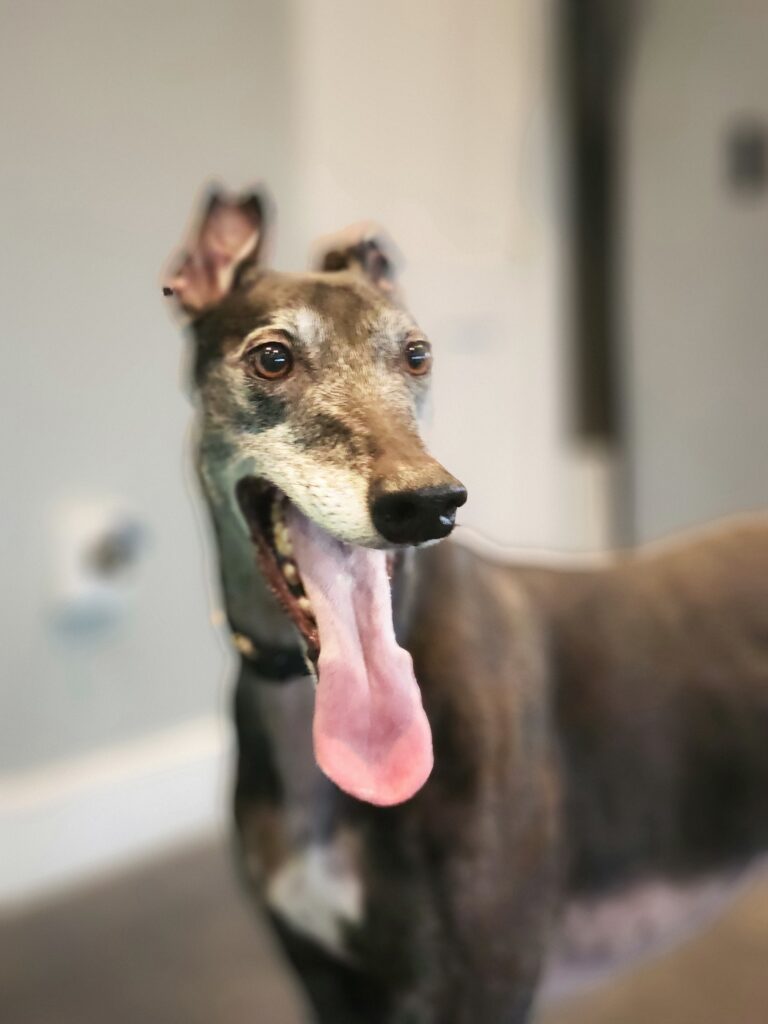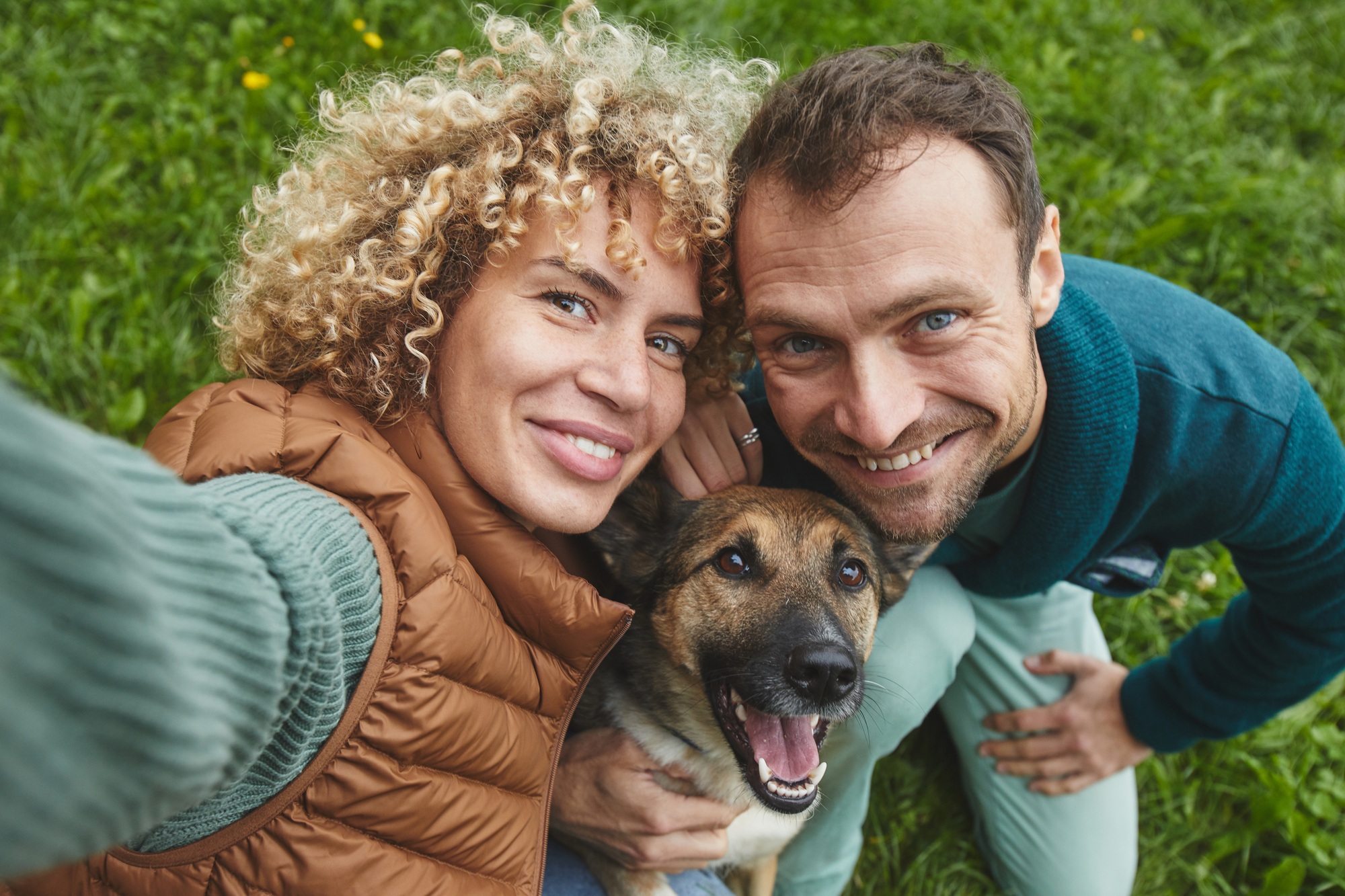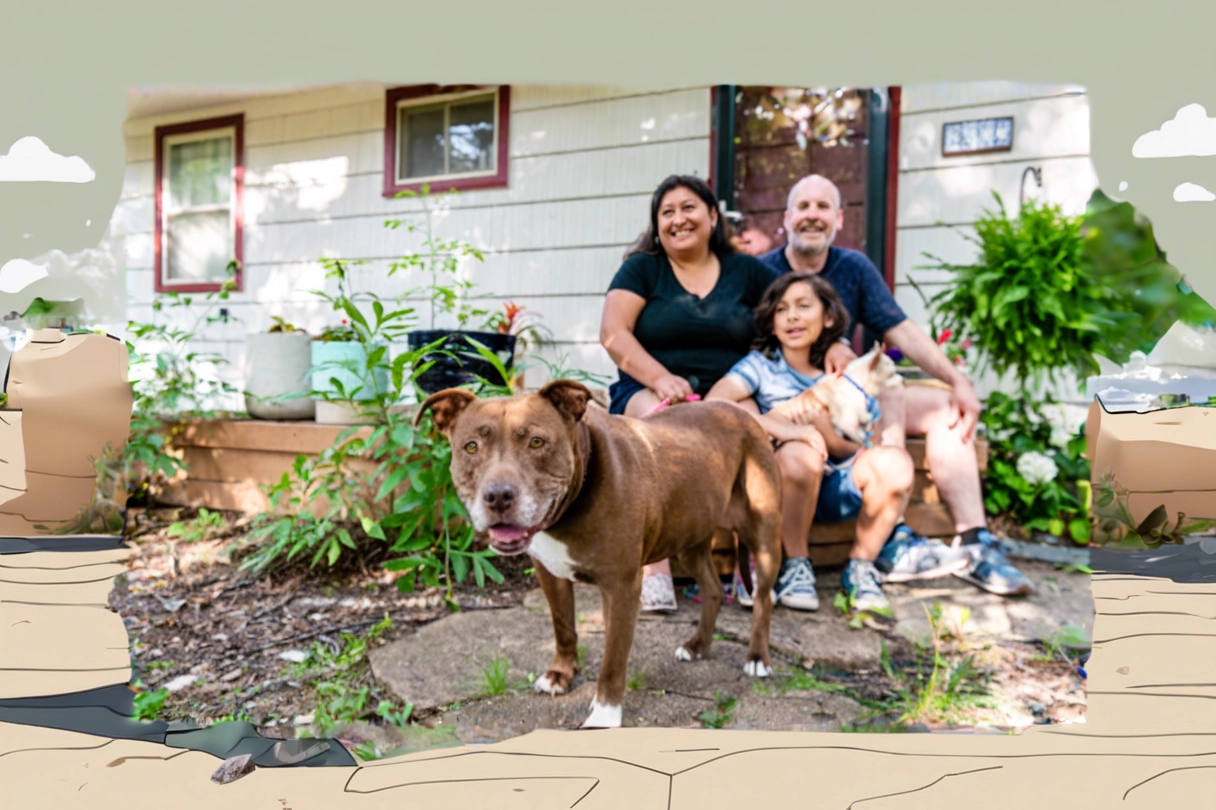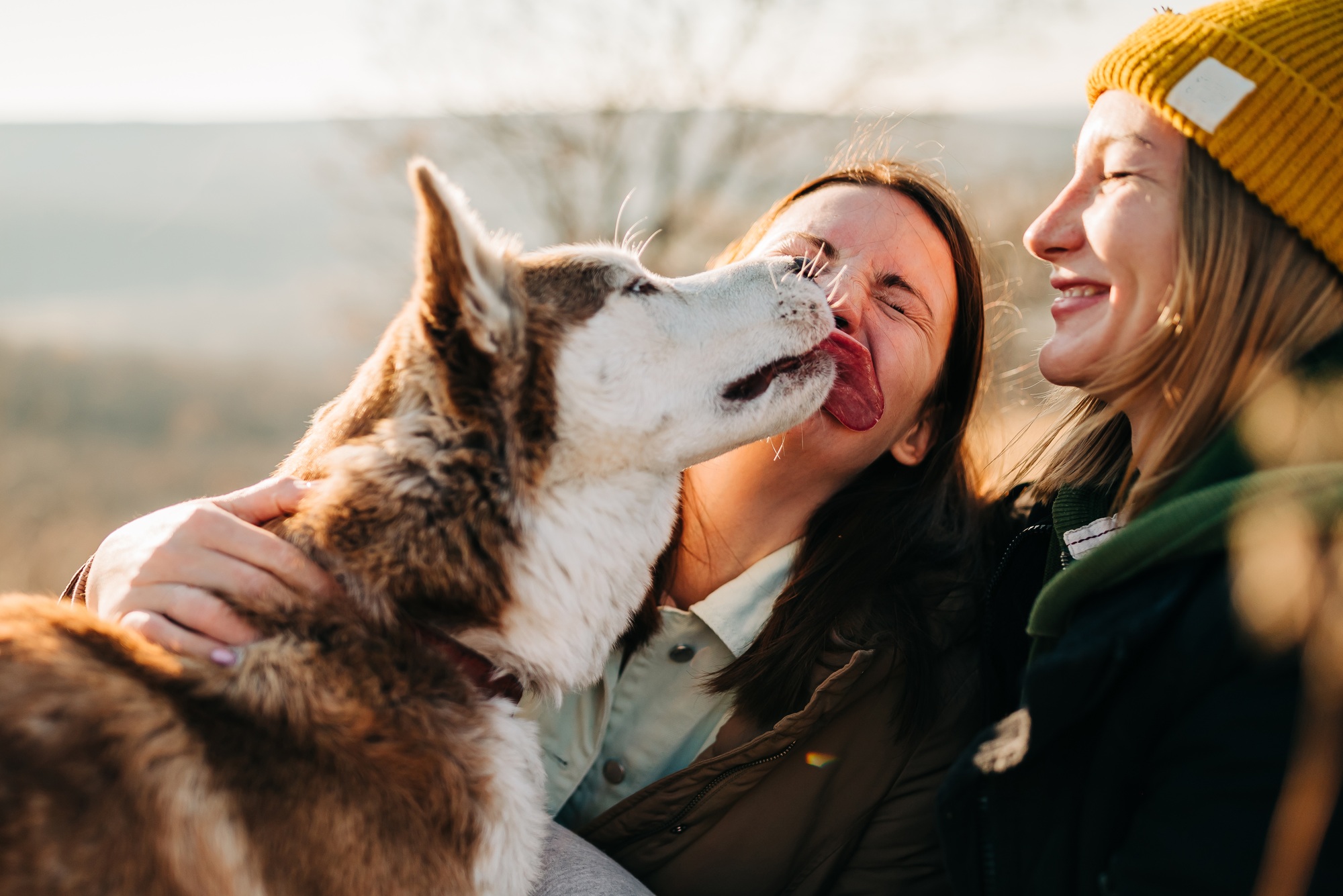I have to confess that I have always thought of my dog, Tommy, as … well, not the very brightest bulb in the box.
This has no effect whatever on how adorable I consider him to be, nor on my resulting level of adoration for him. But it’s true, my training idea when he needed weight-bearing rehab on a broken leg at the same time I was recovering from a hip injury and couldn’t walk him very far didn’t proceed at lightning speed. He was not super quick to pick up on the solution behavior I came up with, sending him walking down to the end of a hallway, touching a traffic cone and coming back for a treat over and over.
My other dog, Annie, had long since learned this, and she occasionally appeared to demonstrate it to him, with a clear thought-bubble over her head reading, “oh for God’s sake, it’s just targeting. Do THIS.”
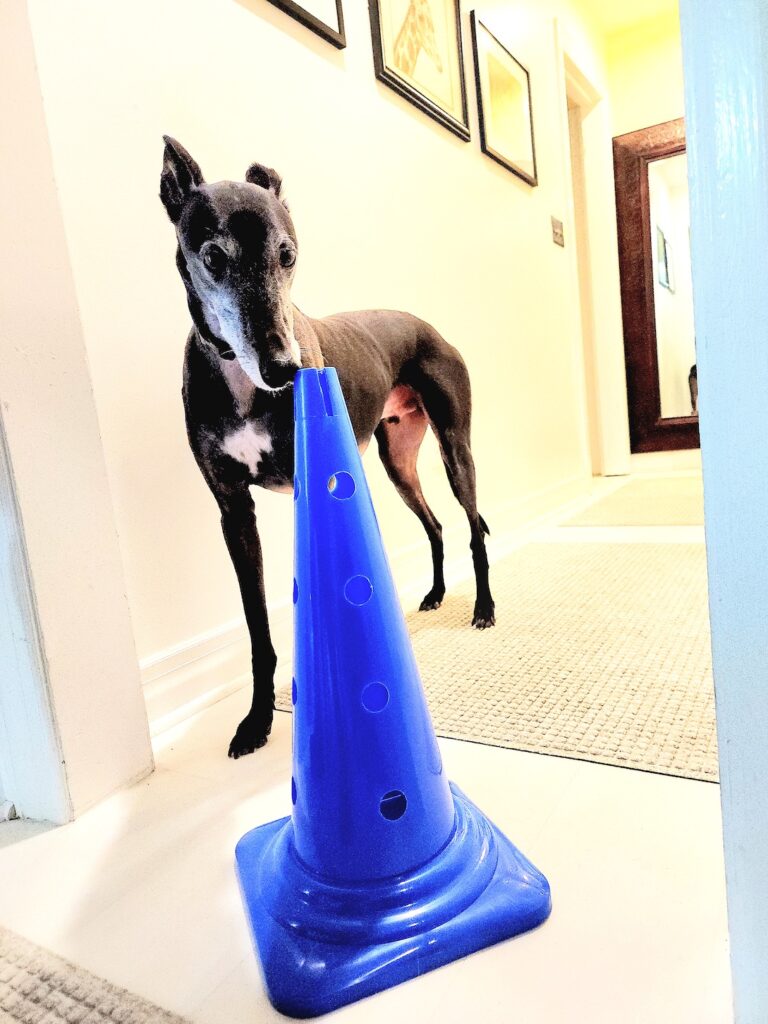
We’ve been playing around with this for only about 3 weeks now, and Tommy has figured out, at pretty much doggy warp-speed learning, how to find the box with the little piece of cheese in it from among 8 to 12 empty ones scattered around a 1200-square-foot space.
He can do it when the baited box is partially hidden, and no matter how much I change around the configuration of boxes, and even when I put the goodie somewhere outside of a box. And he’s figured out that this terrific game is only afoot when I say the “find it,” cue. He ignores the boxes otherwise.
We’ll have to switch to non-food scents pretty soon just to make sure there’s some challenge. And this from a dog who’s never shown all that keen an interest in investigating scents. Maybe he’s a bit cleverer than I thought?
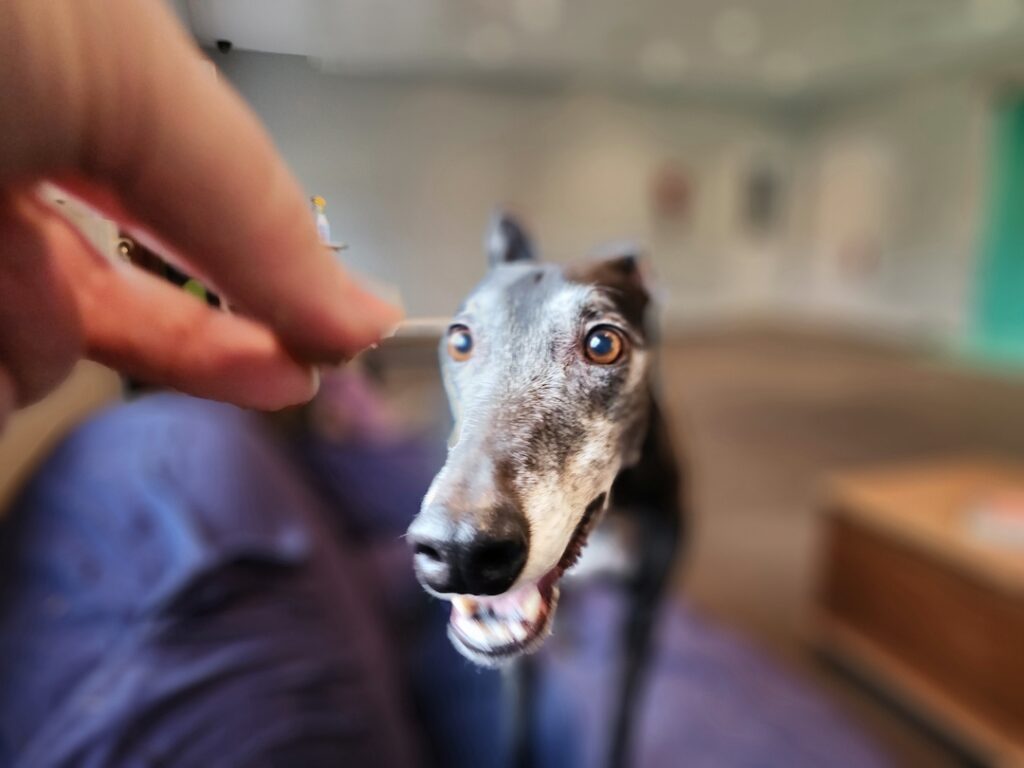
Meanwhile, reports from a study from Finland about various doggy cognition (thinking to you and me) abilities have been popping up in the popular press. The folks who write stories about dog science for the popular media know perfectly well that we all take vicarious pride in saying—or at least thinking if we’re trying to be polite—“my dog’s smarter than your dog, na na na na naaa na.”
So when these Finnish researchers reported different levels of performance between dogs of various breeds on abilities that are characterized as social cognition, problem‑solving, and inhibitory control, it spawned lots of stories.
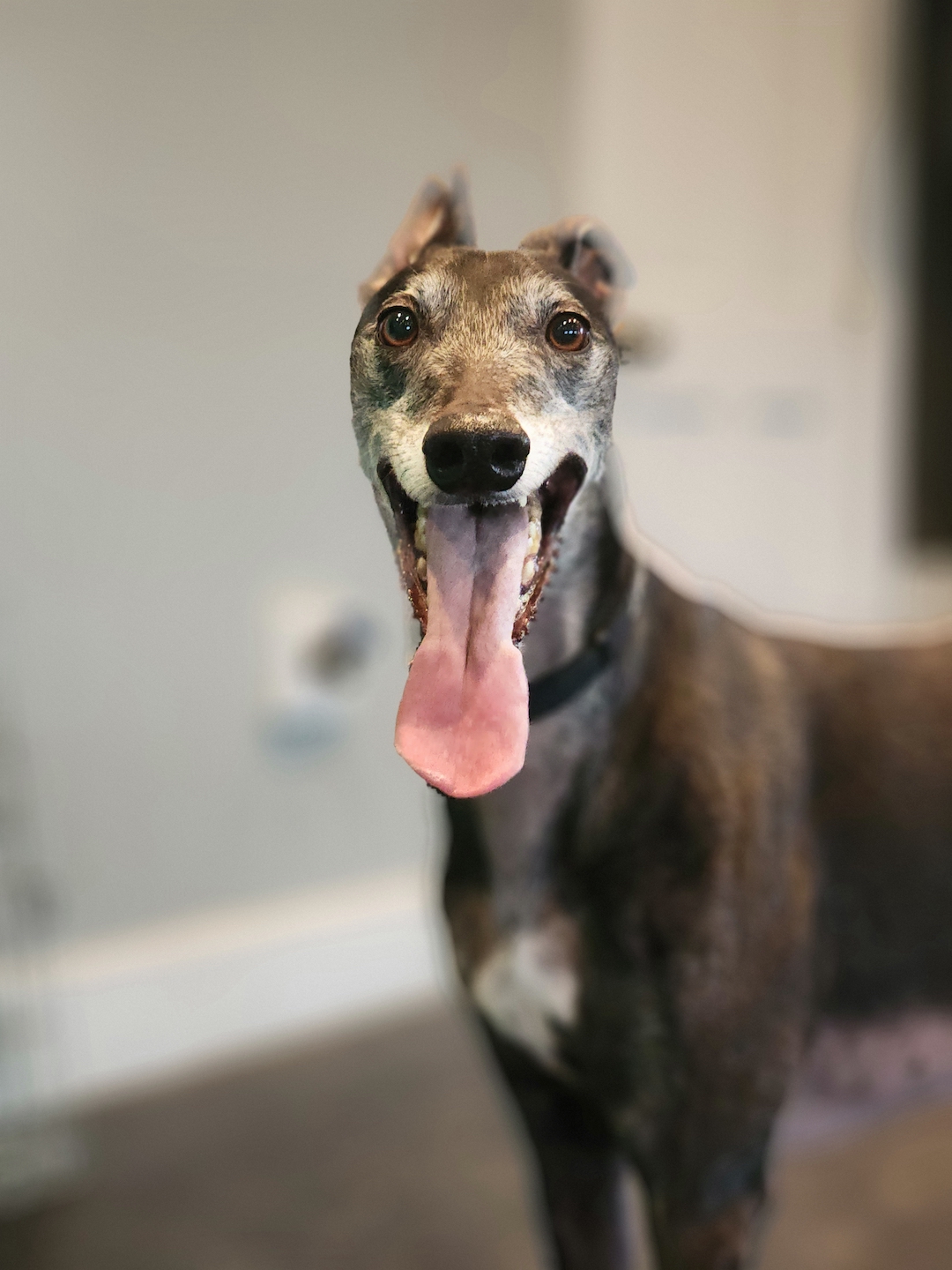
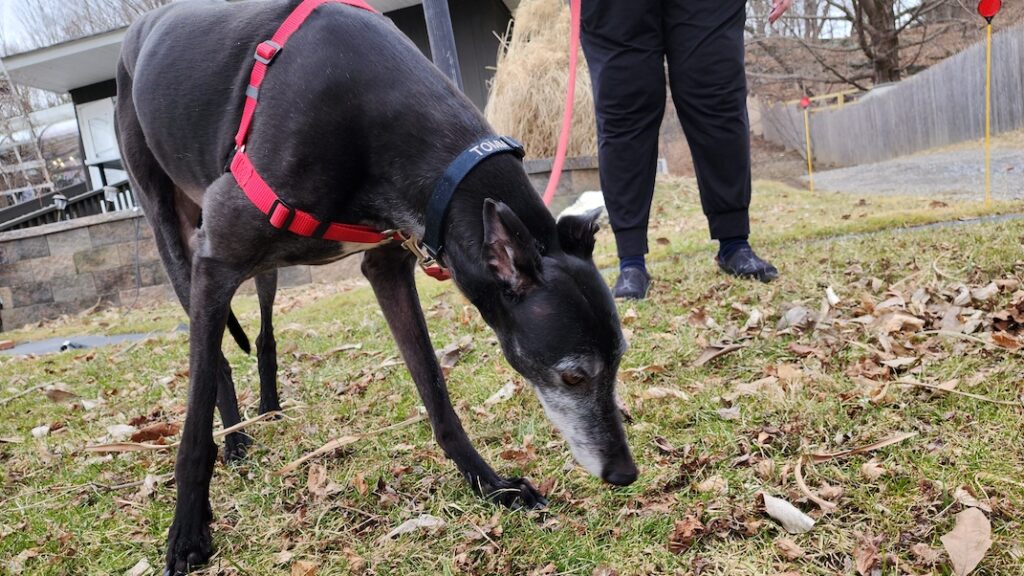
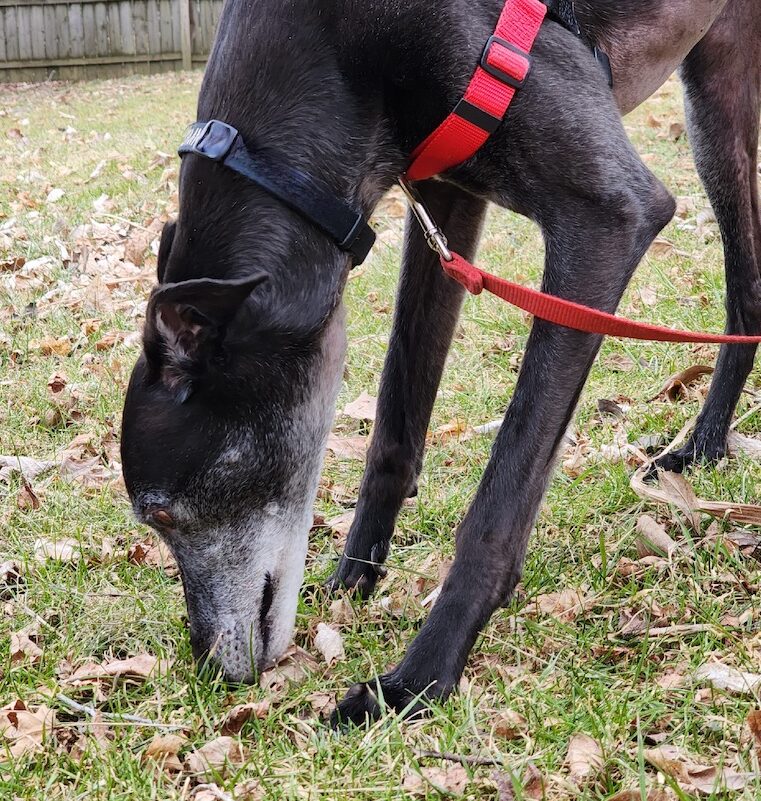
The next day, Tommy’s nose was glued to the ground at the spot where Annie’s episode had occurred, and he kept it there following where we had walked from there on that last day.
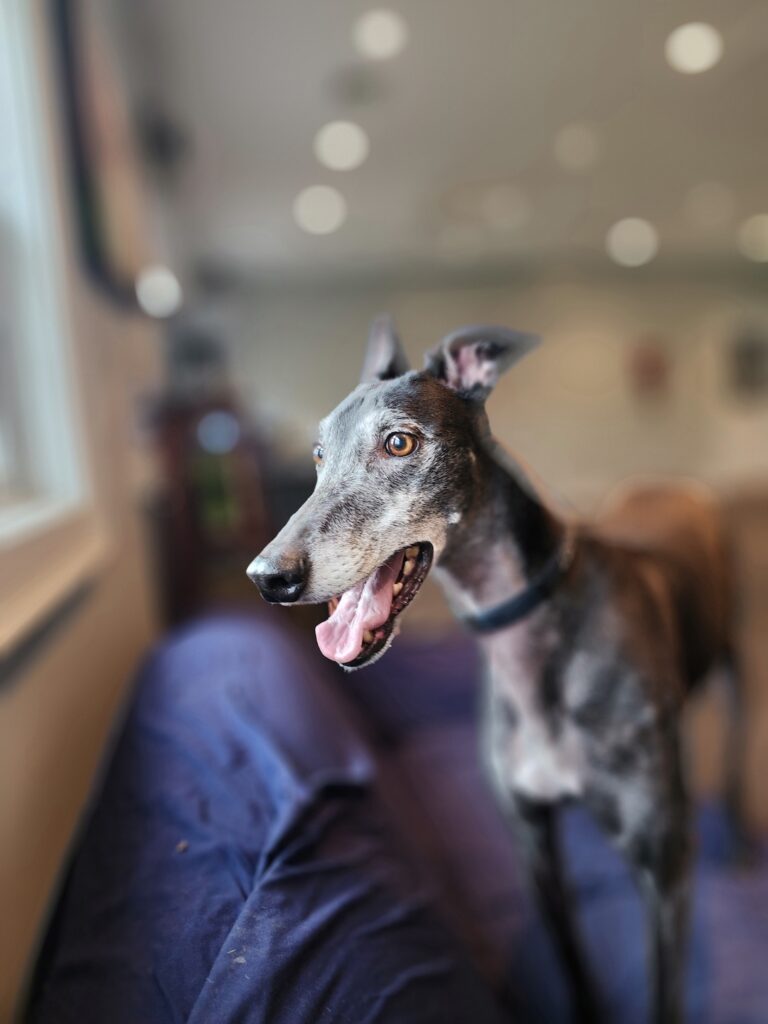
He did this every day for weeks, until (I assume) there had been enough rain to degrade the scent to the point where he couldn’t detect it. Or maybe until he gave up and decided he wasn’t going to find her at the end of that rainbow.
If I had concluded, prior to this, that his lack of scenting behavior was due to any lack of aptitude, I would have been, well, dead wrong.
He just needed a good enough reason to spend brain power and energy on this task.
Searching for Annie was clearly a good enough reason. Turns out even getting a break in a boring winter day is too.
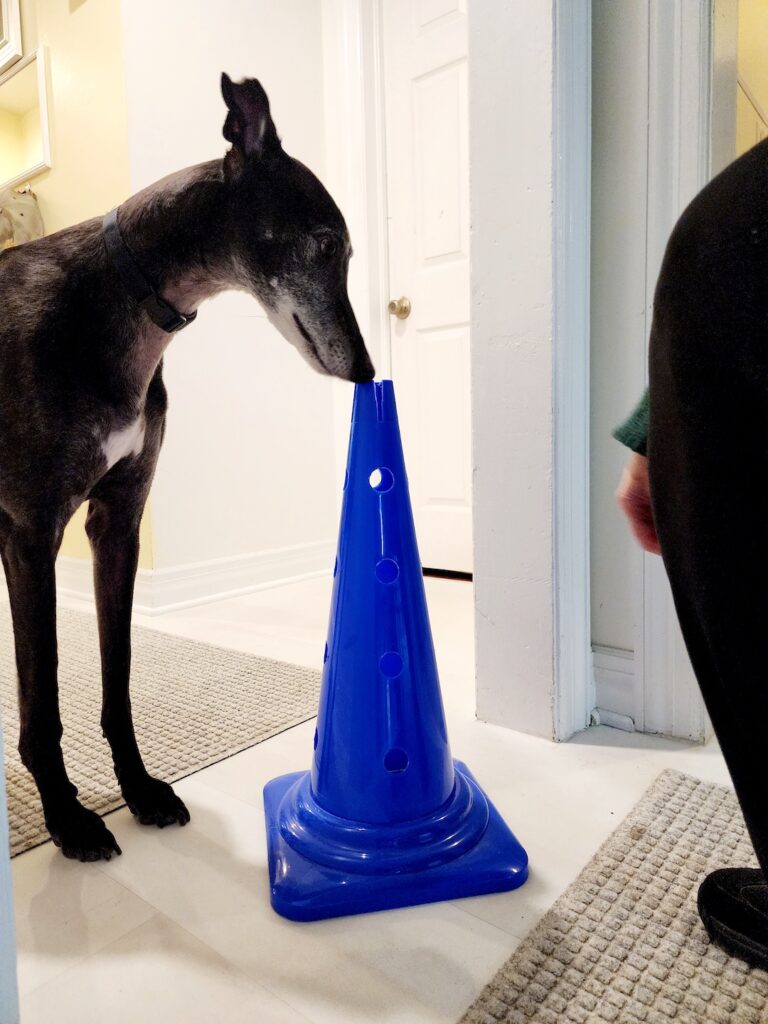
They referenced anecdotal reports they had from the participating owners that many, if not most, of the dogs tested had been trained in various sports and working dog tasks. These included herding trials, gun dog trials, nose work, police work–which usually includes tracking and what’s called “bite work”–agility and so on.
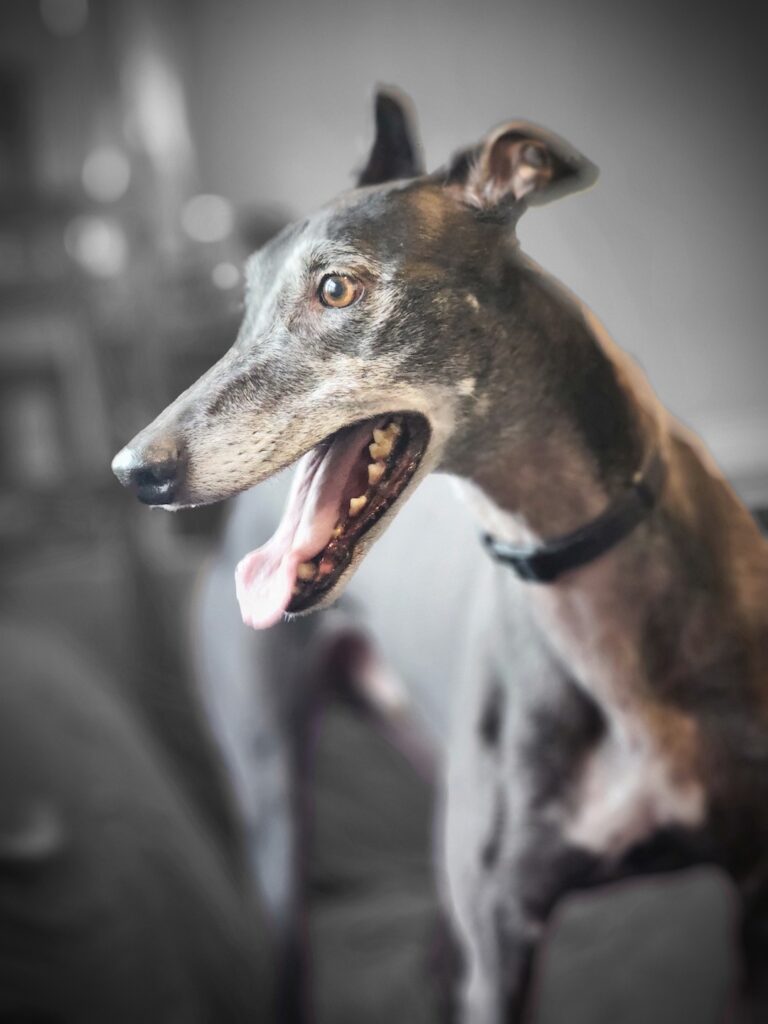
A dog, like any other successful organism, is more likely to try to solve a problem with strategies that have worked for them in the past. So a dog who’s learned he can get food by following his nose is much more likely to search by scent for a goodie under one of several cups than to try the one a person is pointing to at first.
He has, in fact, probably learned during his training not to pay attention to the “hides” his handler has messed with before sending him, as this is a common training-proofing tactic. Much of training is about learning what to pay attention to and what to ignore, and this is different according to the task.
Even more important, though, is what I think of now as the “Tommy question,” which is the why question.
